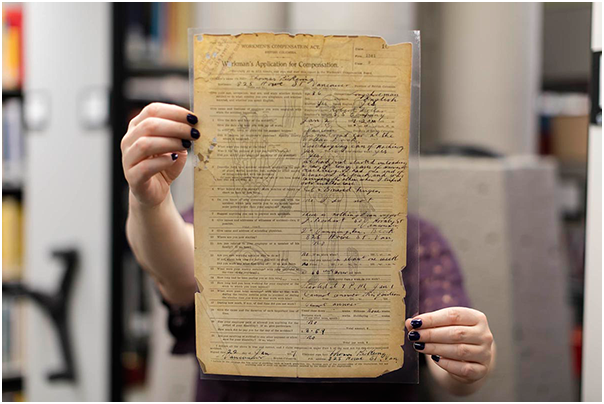1917-1941
On January 1, 1917, the Workmen’s Compensation Act took effect and our organization, then called the Workmen’s Compensation Board, was created. In our first year, 6,000 companies were insured and 75,000 workers were immediately covered.
As we grew, our mandate expanded to include the prevention of workplace accidents, and we began investigating accidents and advocating for worker safety.
See how we began: Watch a video of our first 25 years
- Highlights of our first 25 years
- Stories from our first 25 years
Highlights of our first 25 years
- 1917 The B.C. government puts the Workmen's Compensation Act into effect, providing a compensation rate of 55 percent of average earnings (up to $2,000 per year), $20 a month plus $5 per child to deceased workers' widows, government safety inspections, and a full medical aid provision.
- 1917 The provincial government creates the Workmen's Compensation Board of B.C., which later becomes WorkSafeBC. The first office, with a staff of 44 headed by chair Eldon Winn, opens in Victoria.
- 1918 Our head office moves to 402 Pender Street in Vancouver.
- 1919 All businesses with more than 10 workers are required to maintain a first aid kit on site.
- 1920 Widows' pensions increase to $35 a month and $7.50 per child.
- 1923 The funeral allowance increases to $100.
- 1928 More than 282,340 accidents and 2,670 deaths were reported in the 12 years since the Workmen's Compensation Act took effect.
- 1932 Seventeen logging companies under financial pressure come close to shutting down the entire workers' compensation system with a Supreme Court injunction to temporarily stop the Workmen's Compensation Board from levying assessments.
- 1941 The first Royal Commission to review the Workmen's Compensation Act begins its work, headed by Gordon Sloan, chief justice of the Court of Appeal of B.C.
Stories from our first 25 years
Open for business
After opening for business on January 1, 1917, it wasn't long before we received our first claim. Thomas Pickering, new to his job as a longshoreman, reported for his shift at Vancouver's Great Northern [Railway] Dock.
As he was unloading farm equipment from freight cars, he tripped and fell, crushing his finger. Pickering missed some 35 days of work while recovering. And so, using our rule at the time — benefits amounted to 55 percent of wages lost after a three-day waiting period — he was awarded our first time-loss payment: $32.73.
The date of this claim? January 2, 1917 — just one day after we opened our doors.

